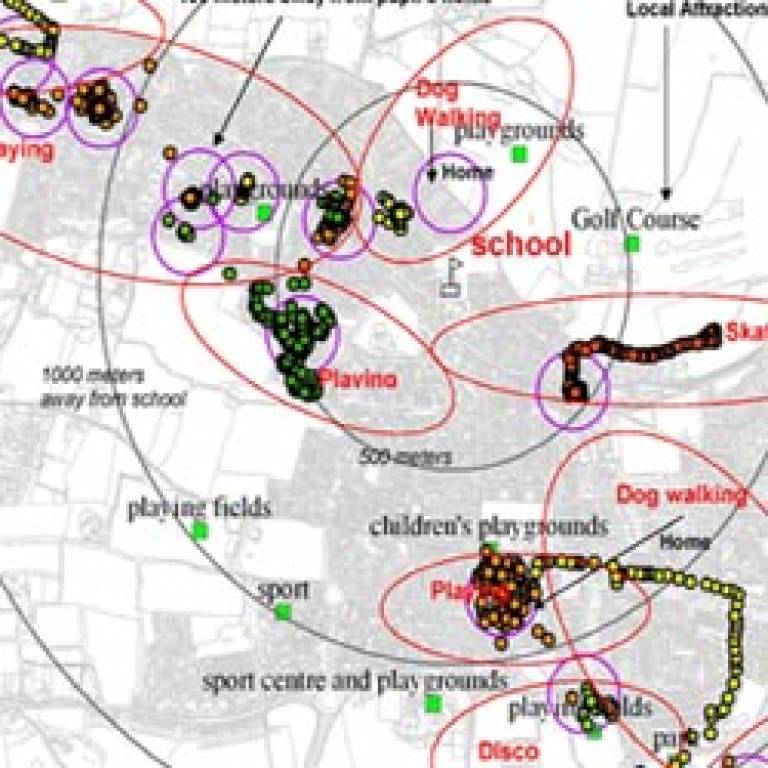How children use their local environment
24 May 2007
A joint project between the UCL Centre for Transport Studies, the UCL Centre for Advanced Spatial Analysis (CASA), the UCL Bartlett School of Planning and UCL Psychology has found interesting differences in the way children's spatial behaviour changes depending on where they are, who they are with and what they are doing.

The project, entitled 'Children's Activities, Perception and Behaviour in the Local Environment' (CAPABLE), was conducted in response to a number of recent changes in children's lifestyles, such as increased car reliance, fewer opportunities for 'free play' and greater adult supervision.
Previous research studies have suggested that children in the UK have suffered from a loss of freedom in terms of being allowed out alone in recent years. In 1971, 72 per cent of seven year-olds were allowed to go to school alone. By 1990, this had dropped to seven per cent. Four factors have been identified in this change: the growth in car ownership, parental choice in education (which sometimes leads to longer journeys and increased car reliance), a faster pace of life, and perceived risk from traffic or strangers.
Project leader Professor Roger Mackett (UCL Centre for Transport Studies) said: "The changing perceptions of risk have partly led to the move from free play to organised activities for children. In the past, children would play out in the streets or walk to the local park. Now they are taken to football lessons, dance classes and so on, and usually by car. Many children have their after-school time filled with these activities, leaving little time for free play or going out gaining experience from making decisions about where to go and whether it is safe to cross the road, and form social interaction with other children."
195 children aged eight to eleven from schools in Hertfordshire were recruited after filling out an initial questionnaire about their travel and activity habits and consent received from their parents. The children were then supplied with lightweight GPS monitors to track their movements and activity monitors to measure the calories they burned. They also had diaries to log the details of their activities - where, when and how they travelled, with whom, and for what purpose.
Once the results from the diaries, GPS and activity monitors were collated and reconciled, the researchers created innovative realisation methods that animate the child's movements in real time on a map as they participate in various activities. The animated maps illustrate speed, movement patterns and energy expended. Information from the diaries tell the researchers what the child was doing at that particular time, for example, going to school, playing football, or walking the dog.
Three measures were used for more detailed analysis: speed of movement, intensity of activity and mean angle turned, or sinuosity. The children were found to move faster and be more energetic on the road than on open space, but tend to move in a more sinuous way on open space. They move faster when at clubs than walking or playing. A different picture emerges when energy consumption is considered, with walking being the most energetic and being at clubs the least. Children tend to move most sinuously when at clubs on open space, which is probably sport, and least sinuously when walking, especially on roads.
Professor Mackett said: "Being with an adult affects children's spatial behaviour. They tend to walk faster, more energetically and straighter when with an adult. Without an adult they tend to 'potter about' in a much more exploratory way. Whilst speed has its benefits, there is a need for children to explore the environment at their own pace, gaining experience and learning about the world."
He concluded: "Overall, there is much to be learnt, but we hope that the increased understanding that this research contributes helps children to use their local environment more, and so lead healthier and happier lives."
To find out more, use the links at the bottom of this article
Image: Location of unstructured activities
 Close
Close

